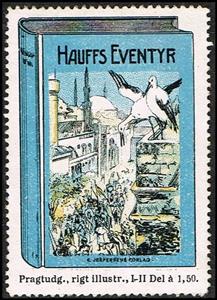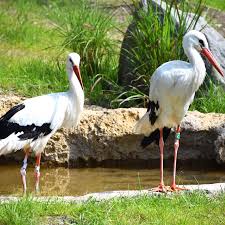Stamp: Jespersens forlag hauffs eventyr (Cinderellas 1910)
Jespersens forlag hauffs eventyr (Cinderellas 1910)
01 January (Cinderellas ) within release Denmark goes into circulation Stamp Jespersens forlag hauffs eventyr face value None No Face Value
| Stamp Jespersens forlag hauffs eventyr in catalogues | |
|---|---|
| Colnect codes: | Col: DK 1910-16/05 |
Stamp is square format.
Also in the issue Denmark:
- Stamp - 10 Oere Faedrelandets Forsvar face value 10;
- Stamp - 1910-911 Aalborg alm understoettelsesforeni face value None;
- Stamp - Afholdsselskabet det blaa baand ikke na face value None;
- Stamp - Ballastfondet den alm danske skibsfoere face value None;
- Stamp - Besoeg om dagen zool have koebenhavn ic face value None;
- Stamp - Blikkenslagersvende foreningen af 1862 face value None;
- Stamp - Blikkenslagersvende foreningen af 1862 face value None;
- Stamp - Blikkenslagersvende foreningen af 1862 face value None;
- Stamp - Blikkenslagersvende foreningen af 1862 face value None;
- Stamp - Brug altid saeber and parfumer fra holt face value None;
- Stamp - Centra dana esperantista ligio face value None;
- Stamp - D.k.c.a.s. Fanefond 10 Oere face value 10;
- Stamp - Det kongelige danske geografiske selska face value None;
- Stamp - Direktionen for officersforeningen i ko face value None;
- Stamp - Ej magt men ret skal gaelde face value None;
- Stamp - En sten til templet i odense 5 oere face value 5;
- Stamp - Forening for bornetandpleje bevar dine tiender face value None;
- Stamp - Foreningen for praktisk boernepleje larslejstra face value None;
- Stamp - Foreningen for praktisk boernepleje larslejstra face value None;
- Stamp - Foreningen for praktisk boernepleje larslejstra face value None;
- Stamp - Foreningen for praktisk boernepleje larslejstra face value None;
- Stamp - Foreningen for praktisk boernepleje larslejstra face value None;
- Stamp - Fred face value None;
- Stamp - FS fyns sukkervarefabrik koebenhavn dra face value None;
- Stamp - Jespersens forlag emma kraft det gyldne face value None;
- Stamp - Jespersens forlag erik hansen det skjul face value None;
- Stamp - Jespersens forlag grimms eventyr face value None;
- Stamp - Jespersens forlag gullivers rejser face value None;
- Stamp - Jespersens forlag hauffs eventyr face value None;
- Stamp - Jespersens forlag lille pers eventyrrej face value None;
- Stamp - Jespersens forlag med briggen efter dol face value None;
- Stamp - Jespersens forlag paa farten face value None;
- Stamp - Jespersens forlag taageoeen face value None;
- Stamp - Jespersens forlag tordenskjold defekt face value None;
- Stamp - Kender du anthos toiletsaebe falkonerga face value None;
- Stamp - Kjoebenhavns kirkesag face value None;
- Stamp - Koebenhavns fodsports forening k f f da face value None;
- Stamp - Koebenhavns fodsports forening k f f danmarks a face value None;
- Stamp - Koebenhavns fodsports forening k f f id face value None;
- Stamp - Koebenhavns kolonial forsyning overflyver al Konkurrence face value None;
- Stamp - Lejrture de unges idraet noerrebro 10 o face value 10;
- Stamp - Musik maerke de unges idraet oesterbro face value 10;
- Stamp - Musik maerke de unges idraet oesterbro face value 10;
- Stamp - N.a.k. Nordens Broderskab face value None;
- Stamp - Ned med skatterne face value None;
- Stamp - Pintsen 1910 dansk skraedderforbunds hj face value 1;
- Stamp - SCT hans aften boernehjaelps fest i bag face value None;
- Stamp - SCT hans aften boernehjaelps fest i bag face value None;
- Stamp - SCT hans aften boernehjaelps fest i bag face value None;
- Stamp - Ship signals i nr 34 face value None;
- Stamp - Silkeborg sanatorie forening 25 oere 25 face value 25;
- Stamp - Soenderjylland jernfondet den yndigste rose er face value None;
- Stamp - Statstelegrafen face value None;
- Stamp - Viborg fjerkrae udstilling 2-5 juni face value None;
|
Data entry completed
46%
|
|
|---|---|
| Stamp Jespersens forlag hauffs eventyr in digits | |
| Country: | Cinderellas |
| Date: | 1910-01-01 |
| Emission: | Cinderella |
| Format: | Stamp |
| Face Value: | None No Face Value |
Stamp Jespersens forlag hauffs eventyr it reflects the thematic directions:
An army, ground force or land force is an armed force that fights primarily on land. In the broadest sense, it is the land-based military branch, service branch or armed service of a nation or country. It may also include aviation assets by possessing an army aviation component. Within a national military force, the word army may also mean a field army.
Birds (Aves), a subgroup of Reptiles, are the last living examples of Dinosaurs. They are a group of endothermic vertebrates, characterised by feathers, toothless beaked jaws, the laying of hard-shelled eggs, a high metabolic rate, a four-chambered heart, and a strong yet lightweight skeleton. Birds live worldwide and range in size from the 5 cm (2 in) bee hummingbird to the 2.75 m (9 ft) ostrich. They rank as the class of tetrapods with the most living species, at approximately ten thousand, with more than half of these being passerines, sometimes known as perching birds. Birds are the closest living relatives of crocodilians.
A book is a medium for recording information in the form of writing or images. Books are typically composed of many pages, bound together and protected by a cover. Modern bound books were preceded by many other written mediums, such as the codex and the scroll. The book publishing process is the series of steps involved in their creation and dissemination.
Storks are large, long-legged, long-necked wading birds with long, stout bills. They belong to the family Ciconiidae, and make up the order Ciconiiformes /sɪˈkoʊni.ɪfɔːrmiːz/. Ciconiiformes previously included a number of other families, such as herons and ibises, but those families have been moved to other orders




